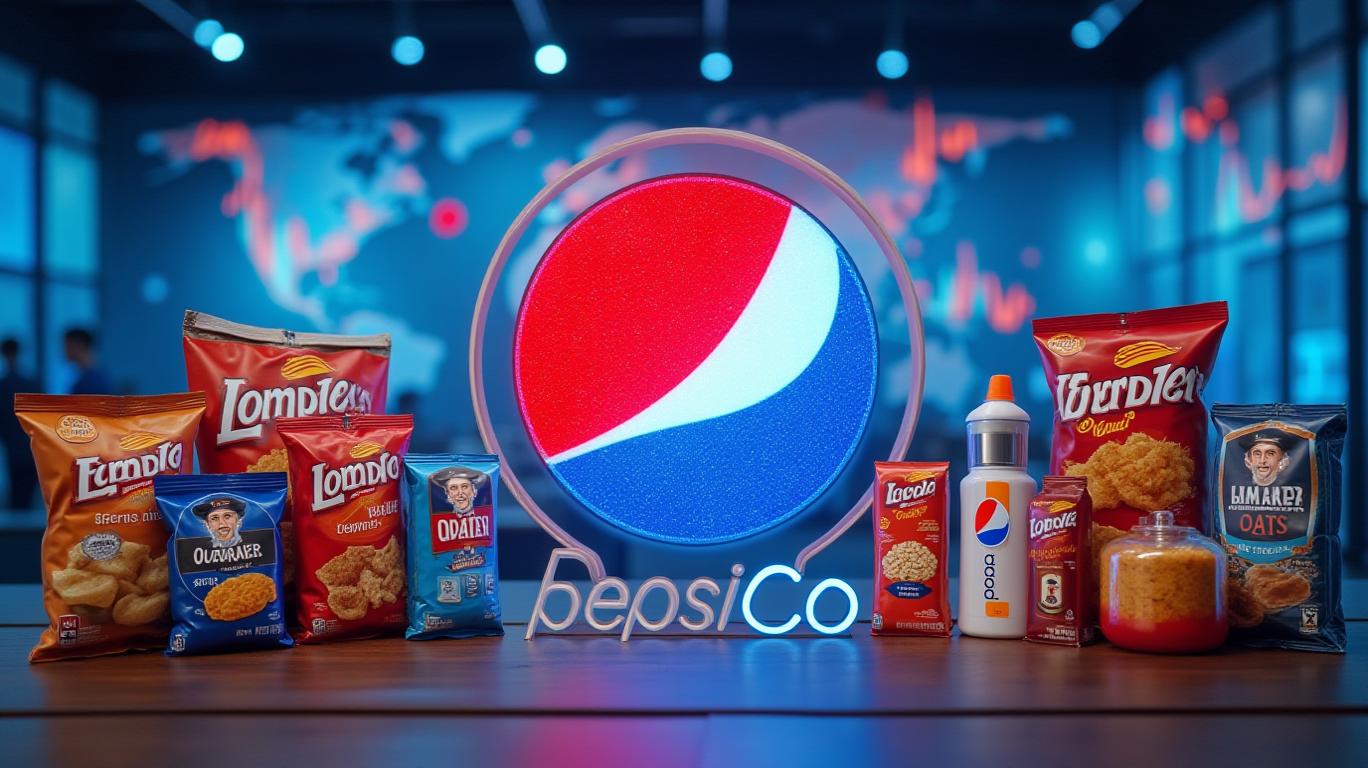Why PepsiCo Stock Is Slumping: A Perfect Storm of Challenges
PepsiCo’s stock plummeted 4.6% on April 25, 2025, after the company’s first-quarter earnings report revealed a confluence of headwinds: rising costs, weaker demand, and regulatory risks. The decline reflects investor skepticism about the company’s ability to navigate a volatile landscape, compounded by a stark revision of its 2025 financial outlook.

Mixed First-Quarter Results Signal Underlying Weakness
Despite narrowly beating revenue estimates, PepsiCo’s first-quarter earnings disappointed. Adjusted EPS of $1.48 fell short of analysts’ expectations of $1.49–$1.50, marking the first bottom-line miss in over five years. Volume declines in North America were particularly concerning:
- Food sales dropped 1%, largely due to lingering fallout from 2024 product recalls in the Quaker Foods division.
- Beverage sales fell 3%, driven by declining soda demand as consumers shift toward healthier options.
This underscores a broader struggle to retain market share in mature categories.
Tariffs and Supply Chain Costs Ignite Immediate Concerns
CEO Ramon Laguarta highlighted escalating supply chain costs tied to global trade tensions. Key issues include:
- A 10% tariff on soda concentrate imported from Ireland to North America, adding pressure to margins.
- The threat of a 25% tariff on aluminum, a critical material for beverage cans.
“These global trade developments are raising costs,” Laguarta stated, emphasizing that these pressures are not yet fully reflected in current prices. Analysts warn that passing costs to consumers could further deter demand.
Consumer Spending Softness and Regulatory Risks
Laguarta noted subdued spending in key markets, particularly in North America and Latin America, where food sales declined. This aligns with broader economic uncertainty, though the company’s struggles also reflect shifting consumer preferences. Meanwhile, regulatory hurdles loom:
- The U.S. Department of Health and Human Services aims to phase out certain food dyes (used in snacks like Cheetos) and restrict purchases of sugary drinks with food stamps.
- These moves threaten sales of legacy products, even as PepsiCo invests in healthier alternatives like prebiotic soda brand Poppi.
Downgraded Outlook Intensifies Investor Anxiety
The company slashed its 2025 guidance, projecting flat core constant currency EPS compared to its earlier forecast of mid-single-digit growth. Organic revenue growth is now expected to be only low single-digit, down from previous targets. This stark revision reflects PepsiCo’s inability to offset cost pressures and demand weakness.
Market Reaction and Broader Implications
The stock’s 4.6% intraday drop on April 25 followed a premarket decline to $140.80, extending its year-to-date loss to ~6%. This underperformance contrasts with the S&P 500’s gains, signaling investor skepticism about PepsiCo’s short-term trajectory.
While the company is pursuing cost-saving measures and diversifying its portfolio, these efforts may not outweigh near-term risks. Geopolitical uncertainty and regulatory shifts could further complicate recovery efforts.
Conclusion: A Crossroads for PepsiCo’s Strategy
PepsiCo’s stock decline is a symptom of a company grappling with a perfect storm of challenges:
- Earnings Miss: The first EPS shortfall in five years signals execution risks.
- Cost Pressures: Tariffs and inflation threaten margins, with no clear path to offsetting these costs without pricing hikes that could deter buyers.
- Regulatory and Consumer Shifts: Health-conscious trends and stricter regulations are eroding demand for legacy products, even as healthier alternatives like Poppi face steep scaling hurdles.
With the stock down 4.6% on the day and 6% YTD, investors are pricing in the risks of a prolonged struggle. The company’s revised guidance—from mid-single-digit EPS growth to flat—highlights the severity of these headwinds.
While PepsiCo’s long-term diversification efforts (e.g., plant-based snacks, hydration brands) offer promise, the near-term outlook remains cloudy. Until the company can stabilize demand, mitigate costs, and adapt to regulatory shifts, volatility is likely to persist. For now, the market’s verdict is clear: uncertainty reigns.


_442a2dcc1749832873286.jpeg)
_e68fac6d1749831664430.jpeg)





